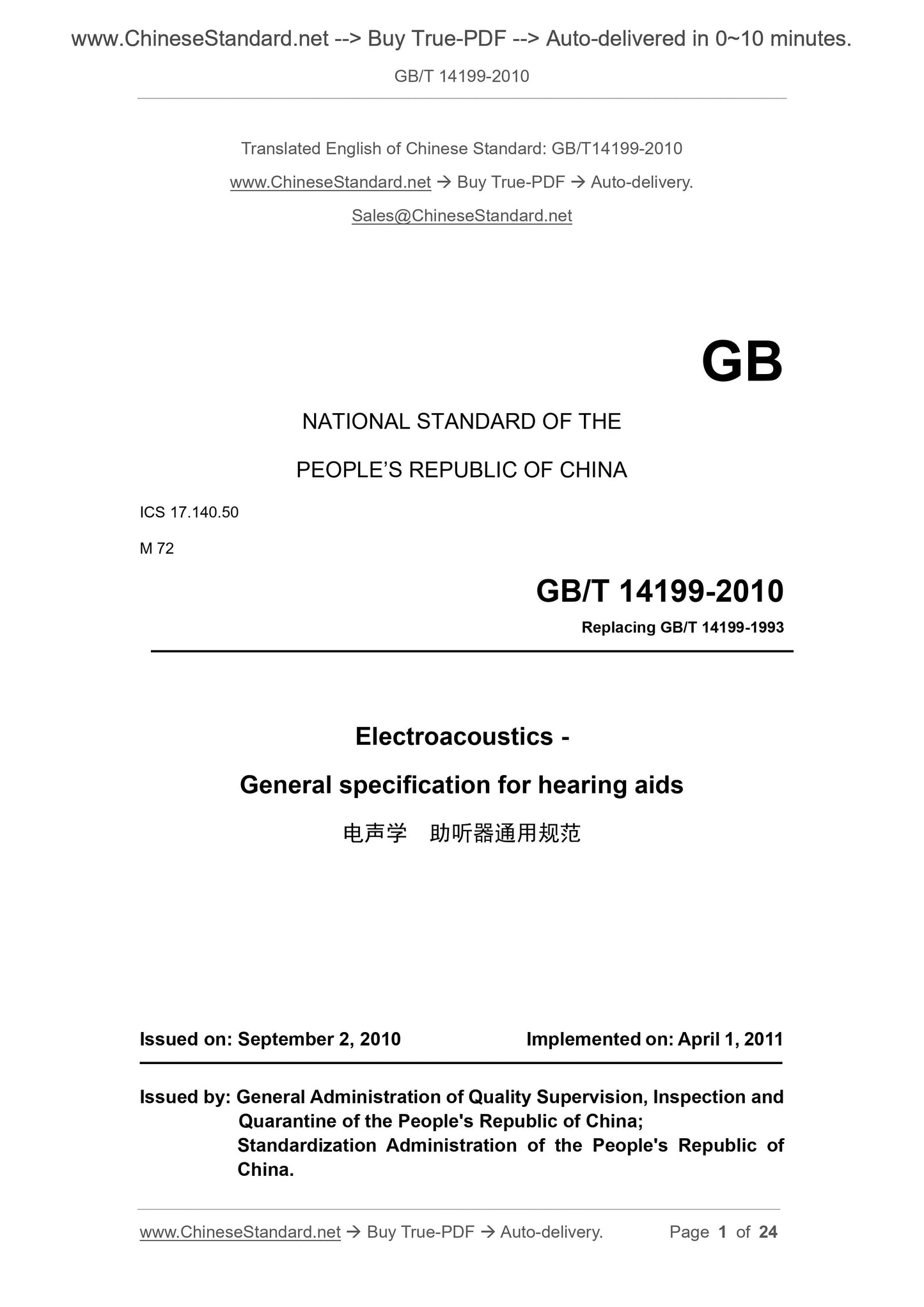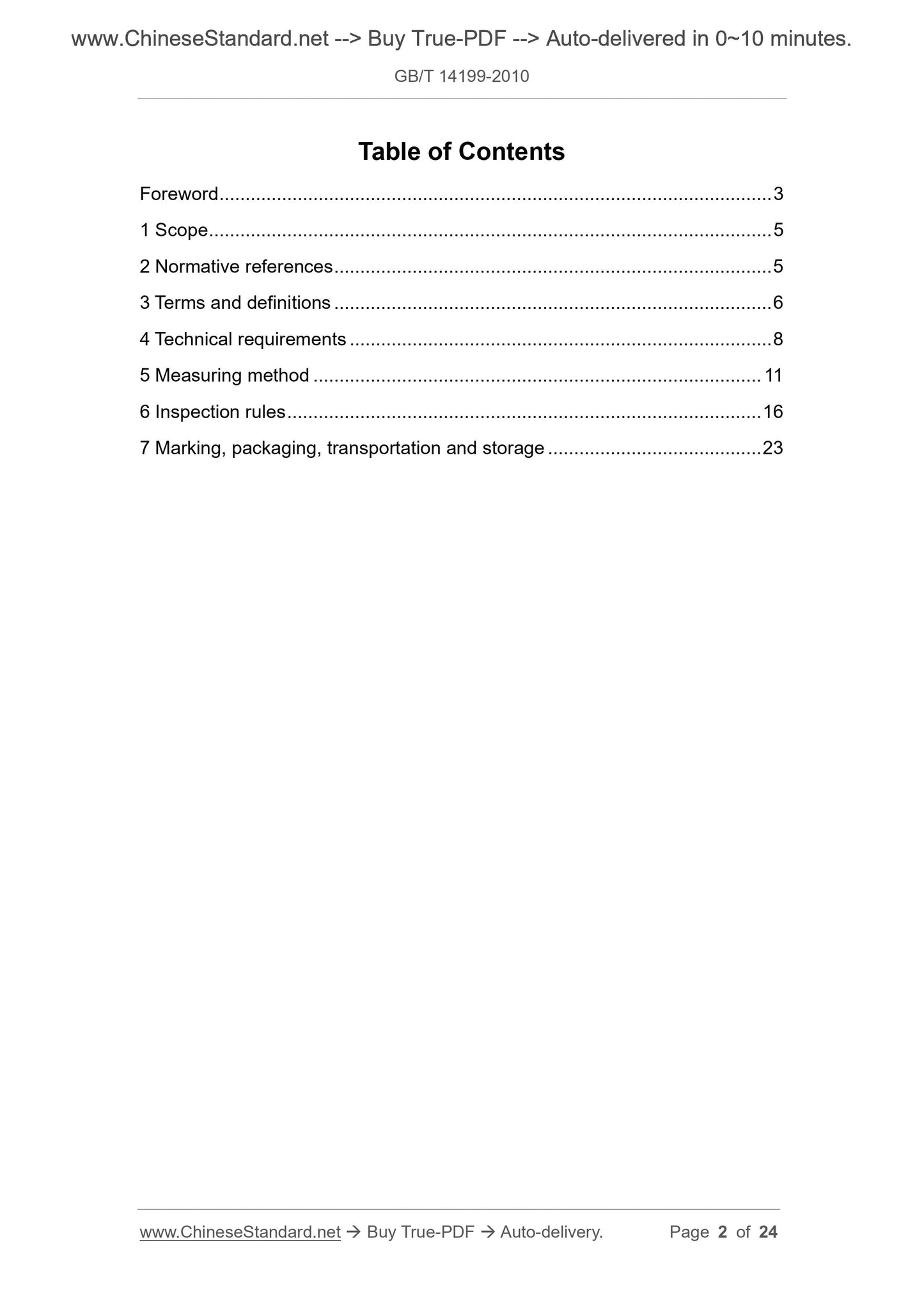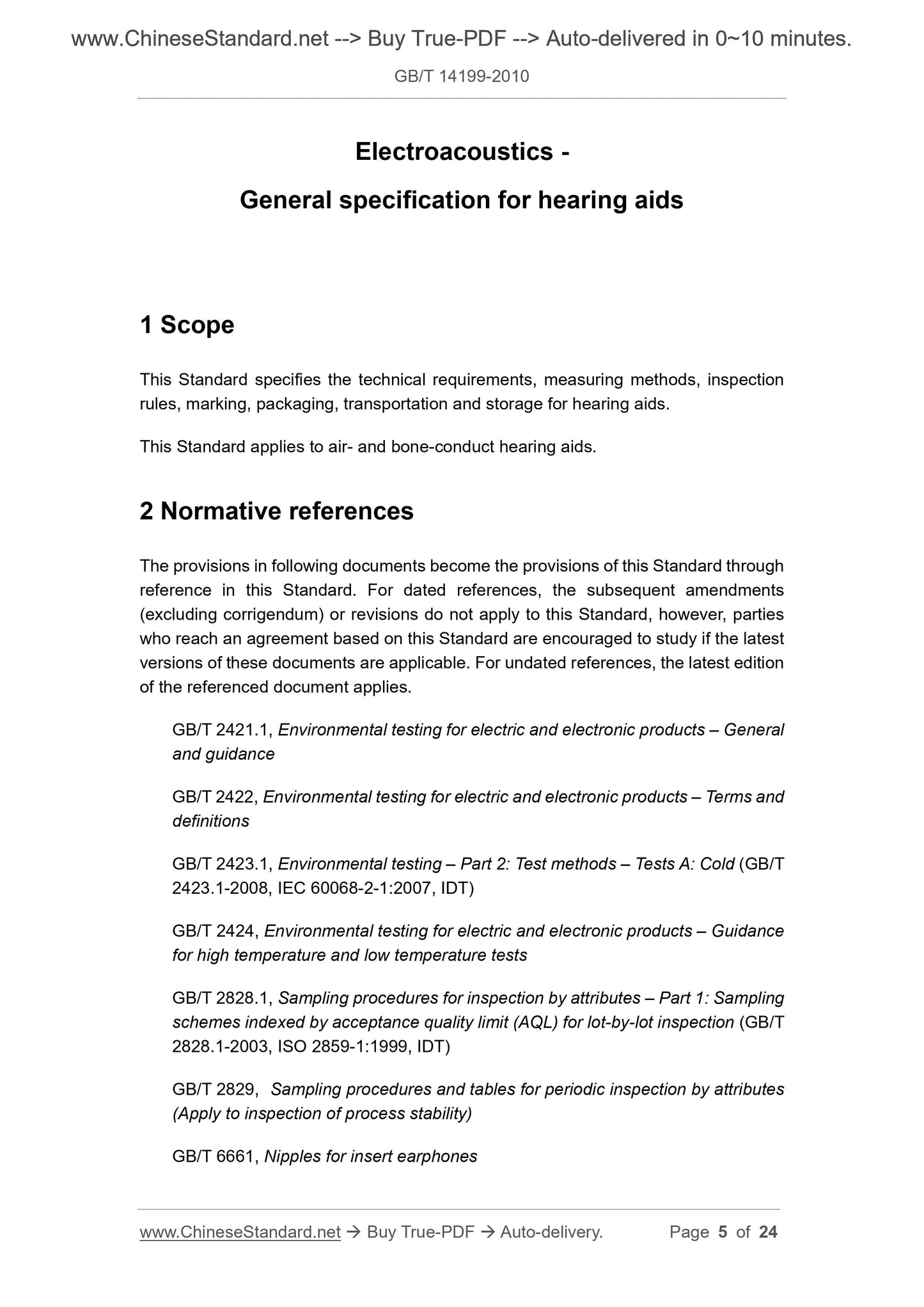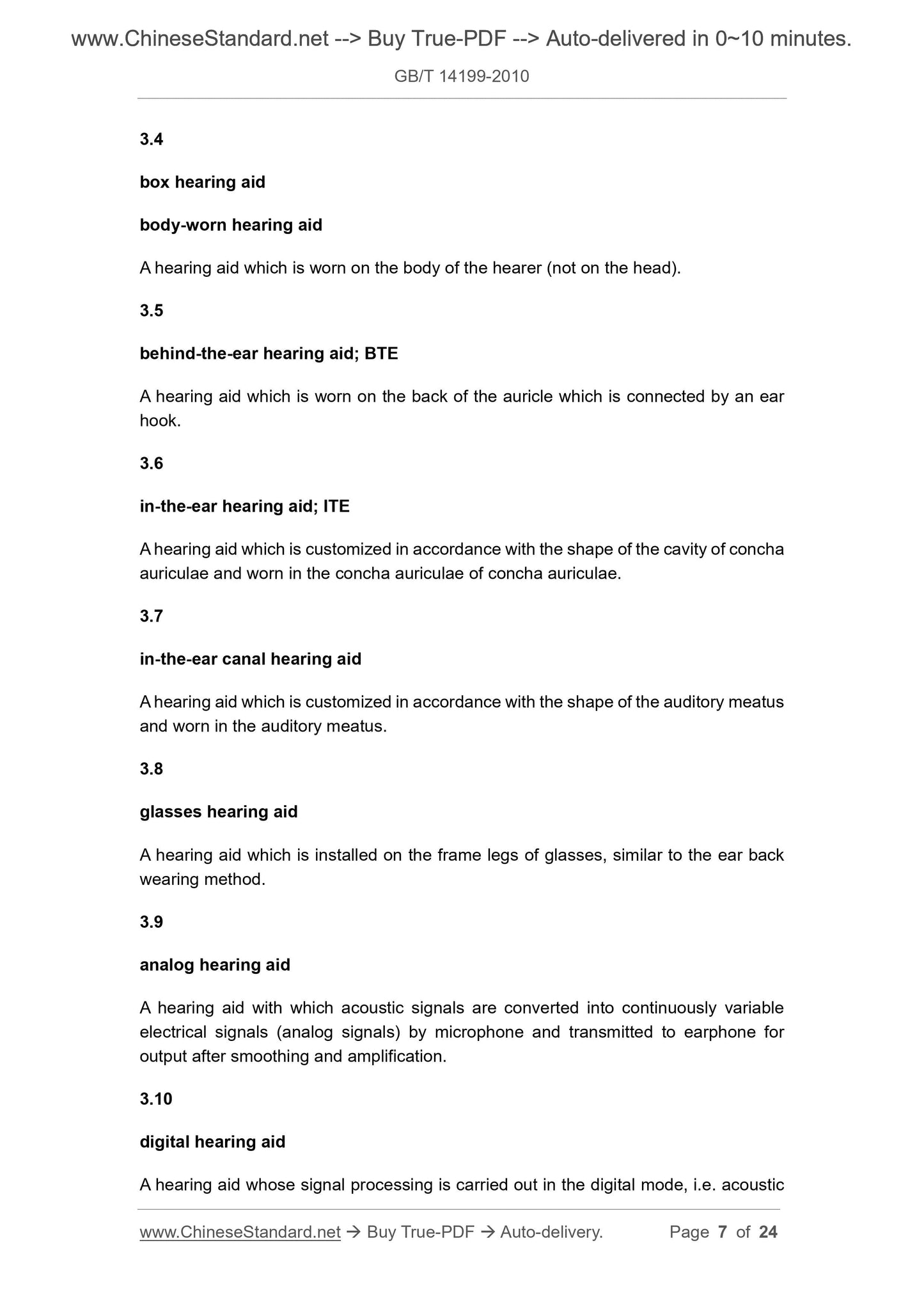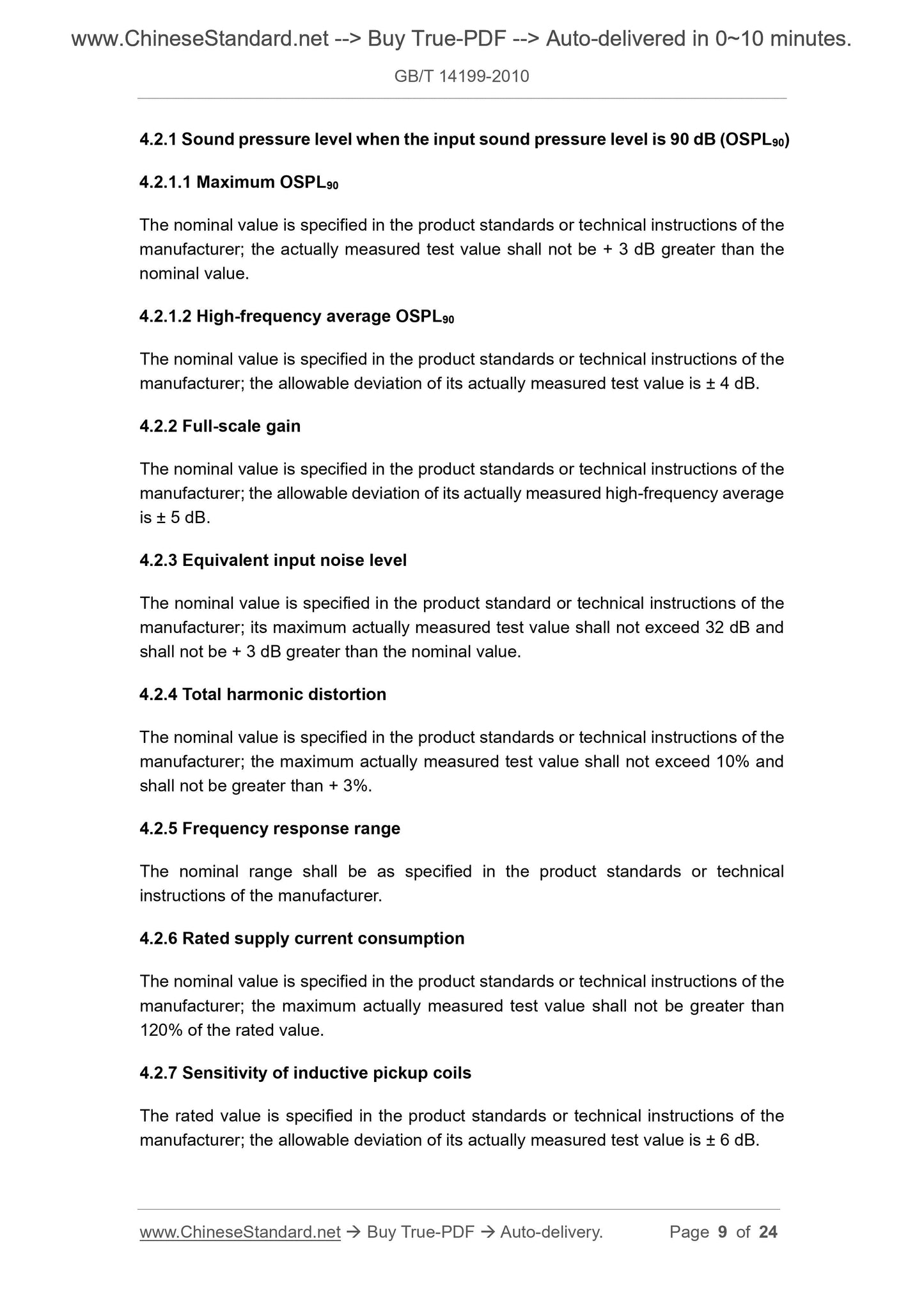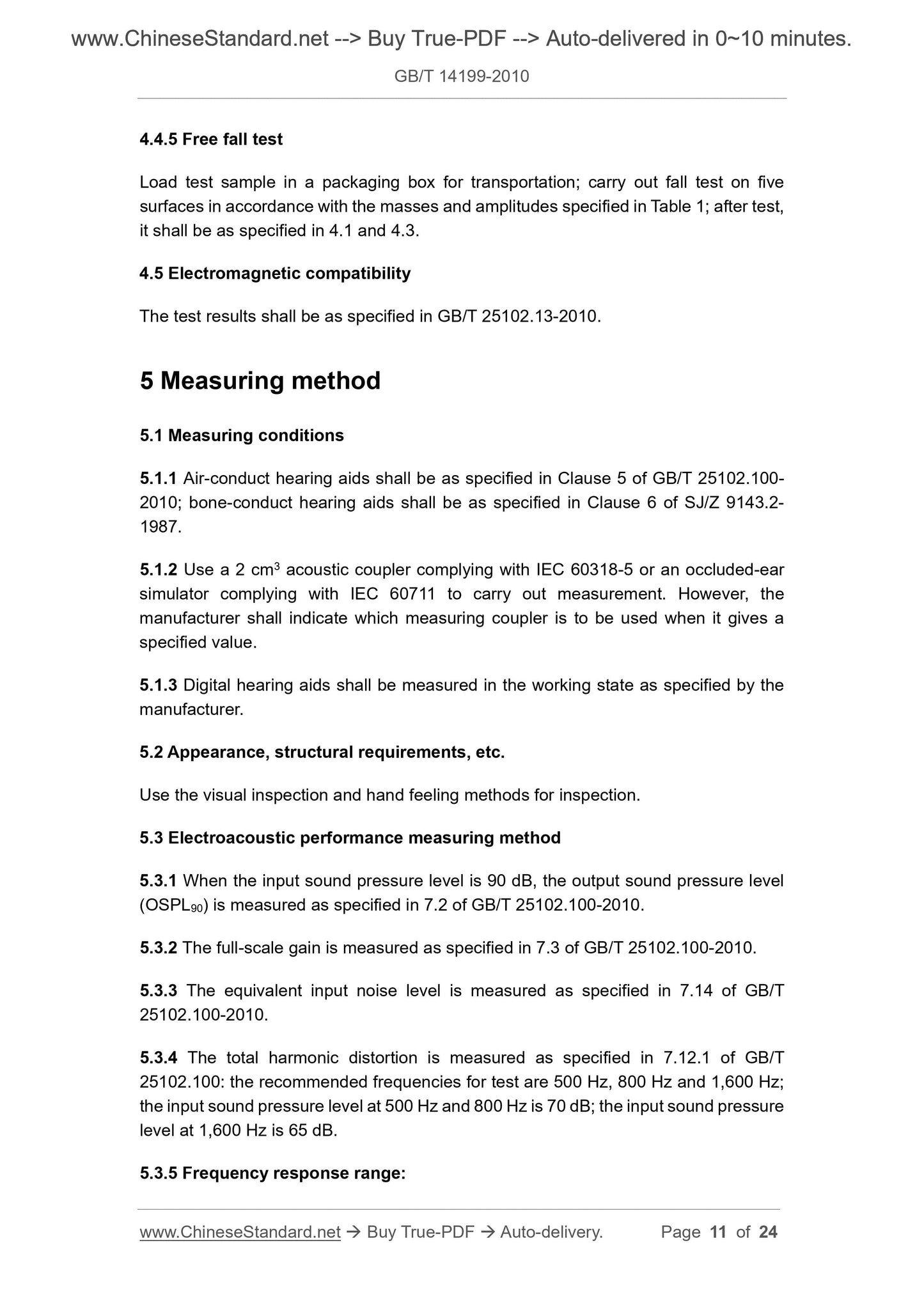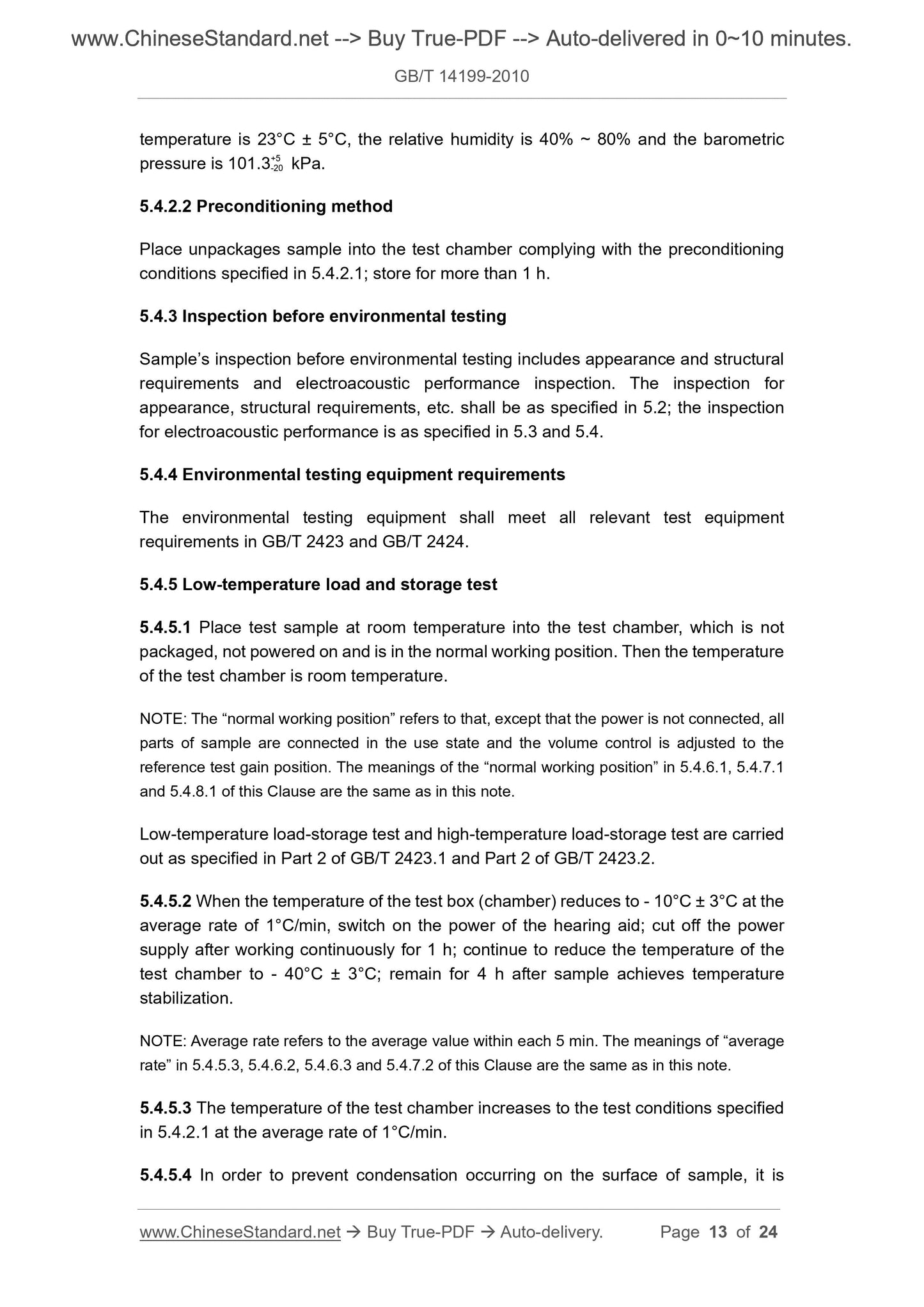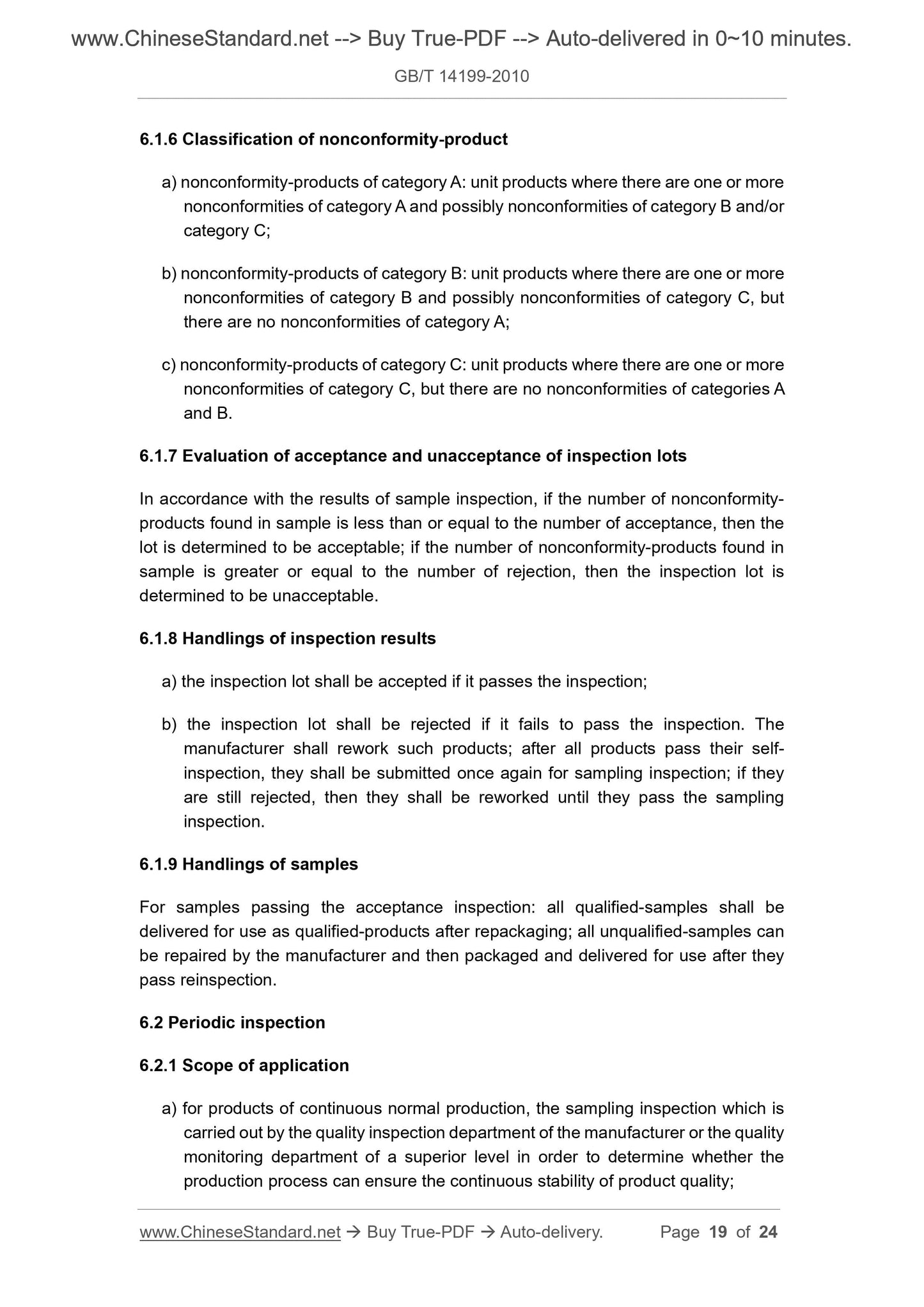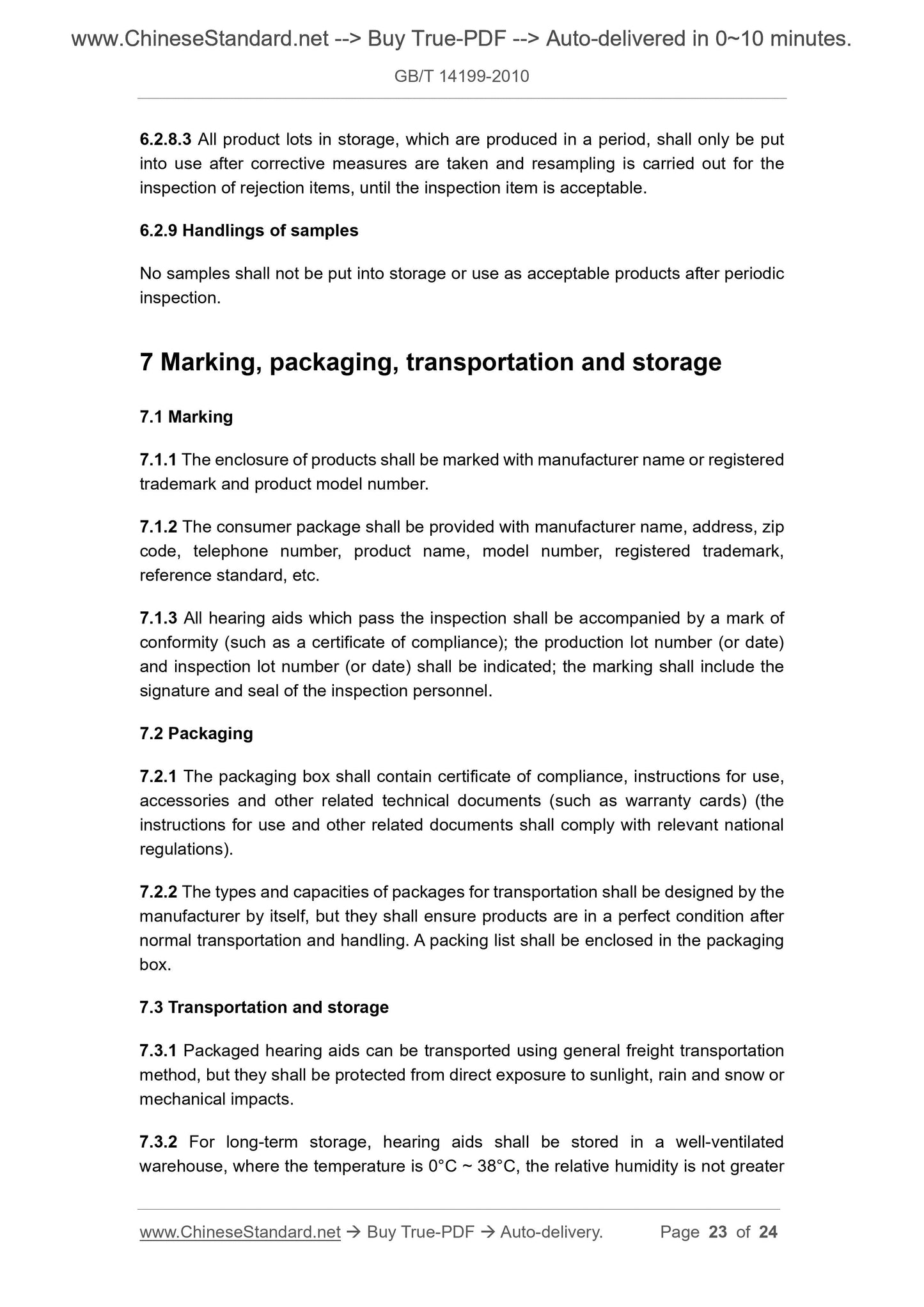1
/
of
9
www.ChineseStandard.us -- Field Test Asia Pte. Ltd.
GB/T 14199-2010 English PDF (GB/T14199-2010)
GB/T 14199-2010 English PDF (GB/T14199-2010)
Regular price
$155.00
Regular price
Sale price
$155.00
Unit price
/
per
Shipping calculated at checkout.
Couldn't load pickup availability
GB/T 14199-2010: Electroacoustics - General specification for hearing aids
Delivery: 9 seconds. Download (and Email) true-PDF + Invoice.Get Quotation: Click GB/T 14199-2010 (Self-service in 1-minute)
Newer / historical versions: GB/T 14199-2010
Preview True-PDF
Scope
This Standard specifies the technical requirements, measuring methods, inspectionrules, marking, packaging, transportation and storage for hearing aids.
This Standard applies to air- and bone-conduct hearing aids.
Basic Data
| Standard ID | GB/T 14199-2010 (GB/T14199-2010) |
| Description (Translated English) | Electroacoustics - General specification for hearing aids |
| Sector / Industry | National Standard (Recommended) |
| Classification of Chinese Standard | H72 |
| Classification of International Standard | 17.140.50 |
| Word Count Estimation | 14,139 |
| Date of Issue | 2010-09-02 |
| Date of Implementation | 2011-04-01 |
| Older Standard (superseded by this standard) | GB/T 14199-1993 |
| Quoted Standard | GB/T 2421.1; GB/T 2422; GB/T 2423.1; GB/T 2424; GB/T 2828.1; GB/T 2829; GB/T 6661; GB/T 25102.100-2010; GB/T 25102.1-2010; GB/T 25102.13-2010; SJ/Z 9143.2; SJ/T 10659; IEC 60318-5 |
| Regulation (derived from) | Announcement of Newly Approved National Standards No. 4 of 2010 (total 159) |
| Issuing agency(ies) | General Administration of Quality Supervision, Inspection and Quarantine of the People's Republic of China, Standardization Administration of the People's Republic of China |
| Summary | This standard specifies the technical requirements for hearing aids, measurement methods, inspection rules, marking, packaging, transport and storage. This standard applies to air conduction and bone conduction hearing aids. |
Share
